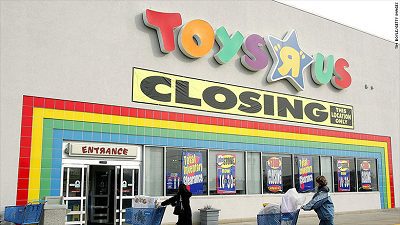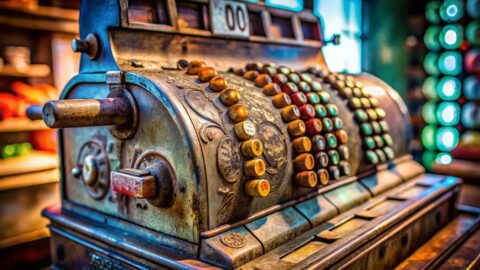Toys ‘R’ Us appears to be headed for chainwide store closures and liquidation in both the U.S. and the UK, where the retailer operates approximately 100 stores, according to a BBC News report. However, CNBC reports that the retailer is exploring a plan that would keep approximately 200 of its 800 U.S. stores open, in part by combining the stores with stronger Canadian operations.
The demise (or the drastic slimming down) of this once-iconic chain raises urgent questions for other retailers seeking to avoid its fate:
• How ‘special’ does a specialty retailer have to be? The merchandise at Toys ‘R’ Us is highly brand-driven, but consumers have numerous other places to buy these items — from Amazon to big box stores like Target and Walmart. Toys ‘R’ Us lacked the hands-on experience of Build-A-Bear or the private label brand power of Lego, creating a differentiation problem in a highly competitive field.
• Does the store experience match today’s taste for experiential retail? Just days after filing for bankruptcy in September 2017, Toys ‘R’ Us announced plans to launch “Play Labs” at 42 stores, providing spaces for kids to test out the season’s hottest toys. Such investments can keep customers in stores longer and add value to purchases, but the move was arguably too little, too late.
• Is the company carrying too much debt for a slow-growth economy? Some analysts believe Toys ‘R’ Us would have had a fighting chance to emerge from bankruptcy but the significant debt it carried was too heavy a weight to overcome. “Toys ‘R’ Us is going under for one reason only: KKR leveraged them with over $7B in debt for expansion even in spite of increased competition from Walmart, Amazon, Target and others,” wrote Greg Buzek, Principal Analyst, IHL Group in a March 13 blog post. “It was not the market dynamics that took these companies over, it was the fact that their owners took on so much debt that it positioned them to only be successful if all the market dynamics went their way.”
Is Private Equity To Blame?
It’s undeniable that Toys ‘R’ Us has been under a heavy debt burden since its $6.6. billion joint acquisition in 2005 by private equity firms KKR and Bain Capital and Vornado Realty Trust. Ignoring the impact of this debt plays into a false “Retail Apocalypse” narrative, according to Buzek: “Here is the reality. Retail sales in the U.S. were up over $232B in 2017. To put that in perspective, we added the equivalent of the annual retail sales of South Korea, the fourth largest retail economy in Asia! Or the entire GDP of Finland. But when you are positioned to only succeed in conditions better than this, it’s not the market that is the issue.”
Did Toys ‘R’ Us Miss The Experience Opportunity?
Some industry experts point to a store experience at Toys ‘R’ Us that wasn’t keeping up with the trend toward experiential retail. “As a shopper and the mother of a 10-year-old, I can say that visiting a Toys ‘R’ Us wasn’t fun,” said Laura Davis-Taylor, Co-Founder, HighStreet Collective in an interview with Retail TouchPoints. “The toys are sealed up in plastic and there are no real play areas.”
Toys ‘R’ Us was caught in the middle between the low price/low experience and high price/high experience ends of the spectrum, Davis-Taylor said. That made them susceptible to competition from Amazon. “People can buy something off of Amazon without a thought, so there’s no reason to come into the store and pay $5 more for it,” she said. “There’s not even the need to try on a pair of jeans, as there is at an apparel retailer. People know they’re going to get a Furby when they order it online, they don’t need to see the box.”
The retailer’s moves to invest in its stores represent too little, too late, said Davis-Taylor. “Target is investing in the billions to upgrade their store experience, and they understand the unique points of differentiation they have,” she said. “People like to go to a store where everyone who is on the trip can get something for them. It’s what I call the ‘pester’ effect when you’re shopping with kids.”
Wider Business Effects Of The Toys ‘R’ Us Downfall
Retailers will not be the only business segment affected by the shrinking or disappearance of the chain. Shares of toy manufacturers Hasbro and Mattel have fallen following reports about the retailer’s liquidation plans. Toys ‘R’ Us accounted for 15% to 20% of U.S. toy sales last year, according to Jefferies analyst Stephanie Wissink, reported CNBC.
High levels of debt are troubling a number of retailers, according to Moody’s Investor Service. The firm is calling for retail defaults to reach a rate of 12.4% by the end of March, which would represent a new high, according to CNBC. In comparison, the rate of defaults for the previous 12 months is approximately 6.3%.
Moody’s expects maturities to spike next year, with many significant debts coming due. In 2019, $5.9 billion in retail debut will mature, with the majority coming from five companies: Sears Holdings, Neiman Marcus, Claire’s Stores, Bi-Lo Holding Finance and Guitar Center.













